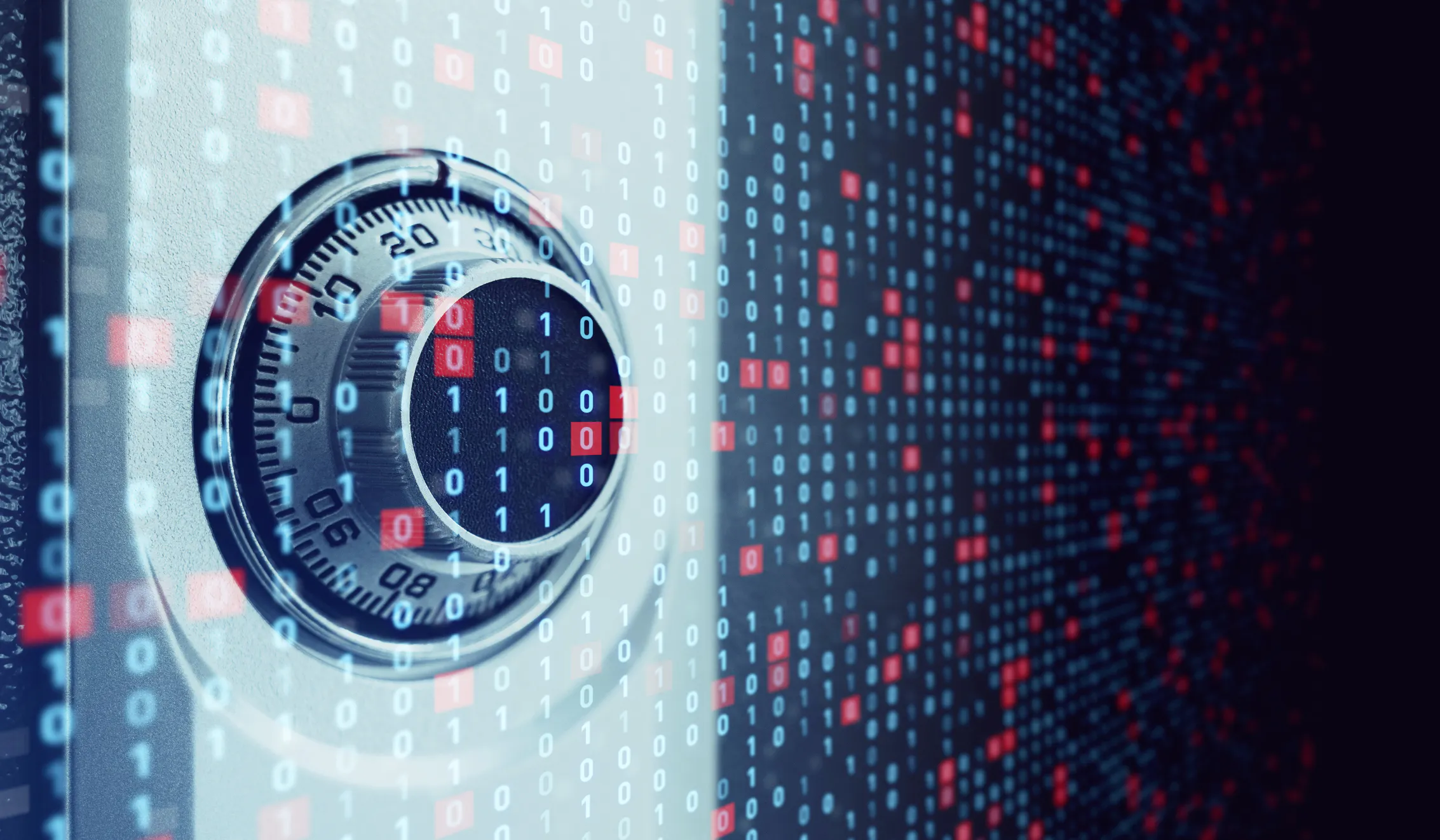Setting A New Standard For Cybersecurity
At Jiko, security isn’t a bolt-on; it’s the foundation. From anonymized ledgers and zero-trust access to encryption by default, we built a privacy-first architecture from scratch. Learn why legacy systems can’t compete, and how Jiko sets a new bar for financial cybersecurity.

At Jiko, we make managing cash safe and simple. Behind that experience is an infrastructure designed with one of the most important responsibilities in mind: security. As a nationally regulated bank, we take that responsibility seriously. And rather than settle for the industry standard, we went above and beyond it. From day one, we architected our platform to protect client data at every level, building a system where privacy, encryption, accessibility, and control are foundational.
Security wasn’t a compliance checkbox; it was our starting point. Long before “Secure by Design” returned to the spotlight, we were already following that approach. It guided how we thought about architecture, development, and operations from the beginning. Five of our first six engineers came from security backgrounds, including those who built critical systems for the Icelandic government. Before a single line of production code was written, the group literally ran stress tests with pen and paper to model potential threats.
That mindset became our blueprint, shaping not just our code but our culture. And while “Secure by Design” may be having its comeback moment now, at Jiko, it’s how we’ve always built.
Why the Standard Isn’t Secure Enough
To understand what makes Jiko different, it’s important to examine the state of security in traditional finance. Through years of conversations with regulators and auditors, our team has developed a clear view of how legacy systems typically operate. Much of the U.S. financial system still runs on infrastructure that was designed decades ago, often using outdated programming languages and workflows that were never built for today's security standards.
In many cases, financial transactions rely on file-based communication methods that can introduce risk. Payment instructions are often processed as plain text files, which, if not properly secured or encrypted, may be vulnerable to interception or tampering. Many of these processes are still powered by legacy code written in COBOL, a programming language developed in the 1960s.
Encryption, if used at all, is often bolted on through separate systems and isn’t integrated into the core platform. This is the norm. At Jiko, we chose a different path—one that treats security as fundamental rather than optional. The only downside of our approach is that the conversations with auditors take longer, as the file formats and processes they expect to see often don’t apply to the way we operate.
Access is Earned, Not Assumed: A Culture of Security
Security is not just about infrastructure. In any industry, culture plays a central role in maintaining a secure environment. From day one, Jiko was designed with security as a core pillar, and has been a company-wide mindset, not a siloed function.
A clear example of this is how we manage internal access. Jiko operates under a strict principle of least privilege. Internally, engineers and employees are given only the access necessary to perform their work. This surprises many new hires, especially those coming from larger institutions where broad access to sensitive data is common, even when it serves no functional purpose.
In most cases, access to raw customer data isn’t actually required to get the job done. By restricting access by default, Jiko minimizes potential vulnerabilities and limits the impact of any individual breach or error. This isn’t just a technical control. It reflects a zero-trust mindset that’s deeply embedded into our culture. When access is granted with intention and monitored continuously, security becomes proactive rather than reactive.
From Architecture to Application
Jiko’s commitment to security and privacy isn’t just reflected in our architecture and internal culture; it shows up directly in the product experience. From how customers move funds to how data is protected in real time, our platform was designed to enforce strong controls without compromising usability.
Jiko Product Controls
Along with two-factor authentication, the Jiko business dashboard supports a Dual-Authorization Transfers feature, which allows customers to control the initiation of outgoing wire transfers with a two-part Maker-Checker system. A team member with Maker permissions creates the outgoing wire request, and a team member with Checker permissions can approve or deny the request.
The movement of funds in and out of Jiko is a tight, closed loop. Transfers are locked to the external bank accounts of the customer’s choosing for added security. Any manual errors made while managing funds on the Jiko Business Dashboard are limited to wiring between approved customer accounts.
Cybersecurity Certifications
Jiko has achieved SOC 2 and PCI-DSS certifications. The SOC 2 certification validates the effectiveness of Jiko’s internal controls, safeguarding the security and privacy of customer information. Meanwhile, PCI-DSS certification ensures the secure handling of payment card data. Jiko’s lock-tight systems are monitored 24/7 by a dedicated team of security professionals.
Another Milestone: FAPI 2.0 Security Standard
As part of our continued investment in best-in-class security, Jiko is fully conformant with the FAPI 2.0 security standard, which is the latest evolution in financial-grade API protocols. Created and maintained by the OpenID Foundation, FAPI 2.0 builds on foundational authentication and authorization protocols and enhances them with stricter guarantees around access control, token usage, and data protection.
FAPI 2.0 is already a regulatory requirement in countries like Brazil and Saudi Arabia, and it underpins open banking frameworks in the UK and several other countries in Europe. While not yet mandated in the U.S., it is increasingly recognized as the new global benchmark for secure financial APIs. By aligning with FAPI 2.0, Jiko strengthens its ability to prevent token misuse, enforce granular access permissions, and support safe, real-time transactions across our platform.
For our clients, this milestone means even greater assurance that their data, permissions, and transactions are protected by the most rigorous, forward-looking standards available in the industry.
Anonymization and Tokenization: Making Data Meaningless in the Wrong Hands
One of Jiko’s core architectural differentiators lies in how we store and process information. Even if breached, tokenized and encrypted data remains unreadable, as our ledger is anonymized by default.
Our ledger architecture has similarities to blockchain in its design, with a focus on integrity and traceability. But unlike public blockchains, Jiko’s internal ledger is flexible and secure enough to handle a wide range of financial instruments. We can tokenize securities and manage complex transaction flows without requiring layered or nested blockchains. This allows for efficient, scalable operations while maintaining a strong security posture throughout.
Setting a New Standard
Security shouldn’t be patched on. It should be baked in. At Jiko, we built a new foundation for banking to deliver not only simplicity and liquidity but trust. We built our infrastructure to reflect that belief—combining modern technology, privacy-first principles, and a culture of shared responsibility. From the way data is stored and accessed to how transactions are processed and protected, every decision was made with security at the core.
Explore how Jiko redefines what safety means in modern finance. Connect with the Jiko team to discuss your needs.
Further reading

How JikoNet Solves For Real-Time Payments Hurdles in the U.S.
Financial institutions, regulators, and current solutions like FedNow and the RTP® network are navigating challenges to provide a trusted and scalable network for treasurers handling high-volume, sensitive transactions. In the spring of 2025, we launched JikoNet, a uniquely safe 24/7 network built on a modern tech stack that bridges current RTP gaps with its T-bill deposit model and modern tech stack.. Read more →

The Real-Time Payments Race: Where the US Stands and What’s Next
Money needs to move in seconds—not days. But in the U.S., real-time payments haven’t reached widespread adoption for treasury teams, with a slower evolution shaped by regulatory considerations, legacy banking infrastructure, and competition among financial institutions. While the RTP landscape in the U.S. continues to evolve, the launch of multiple networks, adoption thus far, and clear value for users point to a significant demand for RTP development.. Read more →

Berkshire Hathaway’s $234 Billion Bet? Here’s What Treasurers Need to Know
When Warren Buffett makes a move, the world pays attention: the Oracle of Omaha recently surpassed the Federal Reserve in short-term Treasury holdings! A cash management strategy heavy on T-bills is optimal: it prioritizes safety and liquidity while reaping the returns associated with the safest short-term instrument. Read more →